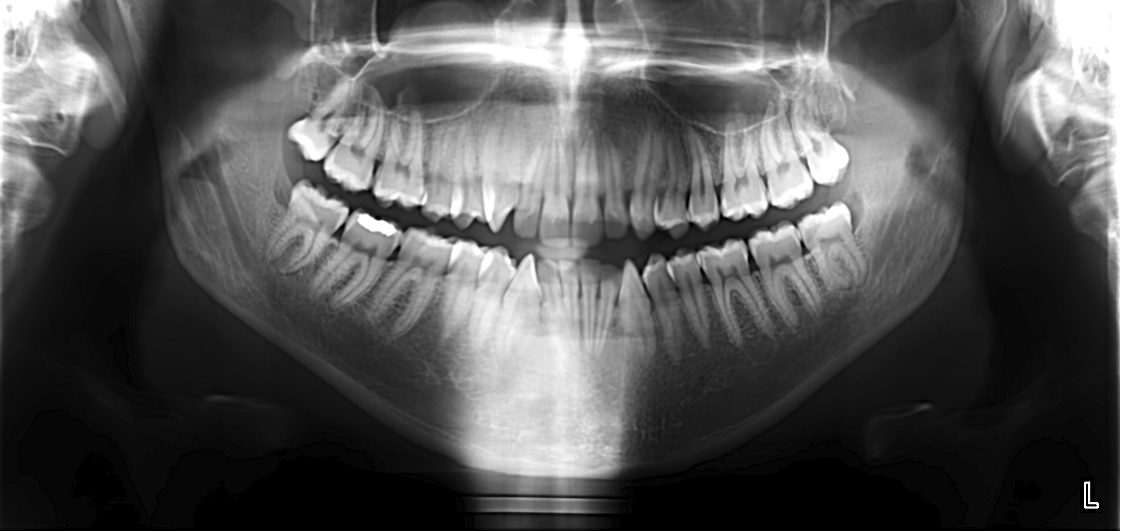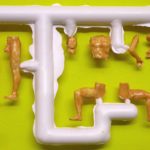Everything wrong with Forensic Science
Imagine yourself in June 2018. You have successfully completed this semester and are in the airport on your way to go on a well deserved holiday! However, when you are going through the passport control, a police officer suddenly shows up and takes you to another room. A few hours later, you find yourself not on a flight to paradise but in an interrogation room being charged with murder.
This is not the introduction to a horror or science fiction story that I came up with but a very real situation that has already happened. It is part of a large collection of stories about people like Brandon Mayfield who will be discussed later on. And forensic science has everything to do with them.
Am I Really Unique?
I always thought that my DNA and fingerprints are unique and cannot be found on any other person in the world. However, during the past decades, experts have increasingly pointed out that there is no scientific proof of such uniqueness, and up to now there has been no initiative to conduct studies of large populations to establish the uniqueness of marks or features.The assumption of uniqueness underlies all areas of forensic evidence.
However, the even bigger problem lies within the “overtaxed, inconsistent, and underressourced forensic science infrastructure” and how forensic evidence is collected, examined and interpreted.
Forensic Science in Court
Forensic evidence is used and accepted by courts all over the world to help the jury with convictions of cases concerning, for instance, attempted murder, child abuse or burglary. Forensic science practices include pattern or experience evidence, such as fingerprints, firearms examination, toolmarks, impressions (for instance, footwear), bloodstain pattern analysis, handwriting, hair and bite marks, as well as analytical evidence like DNA, coatings (for instance, paint), fluids, fire and explosive analysis. and chemicals and materials (for example, drugs). Some of these practices, such as nuclear DNA analysis, are laboratory-based while other practices rely on experts to observe patterns among fingerprints or bite marks.
While these practices, in particular DNA analysis, have helped identify convicts and solve crimes, it has also been revealed that faulty forensic science has also contributed to wrongful convictions of innocents. Between 1989 and 2008, 223 people were imprisoned in the US, and later exonerated (proven innocent) by post-conviction DNA testing. And with false positive rates among the more scientific sound forensics, such as fingerprint analysis, being estimated as high as 1 out of 18, the dark figure of wrongful convictions is much greater than what we expect.
Unreliable and Invalid Forensic Evidence
We are in 2009, in Germany, where a murderer is haunting the people of Heilbronn. The police has found common DNA traces in all the crime scenes and are now searching for the convict. However, this common DNA trace then suddenly turns out to be a contamination on the cotton swabs that have been used.
However, even when high quality evidence and tools of analysis are available, there is a large room for errors when it comes to the system and human factors in forensic science.
In the US nearly “anyone with a garage and some capital” can theoretically open a forensics laboratory and start offering services to court since no official certifications are required. Moreover, even laboratories offering excellent services are constantly under the constraints of major limitations in time and resources.
Another factor is that forensic laboratories seldomly are individual institutions, but are run by government or the police. This often results in a subjectification of data, due to the scientists who unintentionally let their access to irrelevant case information limit their ability to perform objective analysis.
It is important to understand that forensic sciences often do not meet the fundamental requirements of science but are still perceived by most people, even those who are considered experts in the field, as being bulletproof.
Why is this Important?
All of this talk about the faults of forensic science is important because we constantly overestimate the validity of the conclusions that are based upon the analysis of forensic evidence. And this can have serious consequences.
Let us have a closer look at the case of US lawyer Brandon Mayfield who was arrested in connection with the train  bombings in Madrid in March 2004. An FBI expert had testified that, to a certainty of 100 percent, Mayfields fingerprints were matching those that had been found on a bag in Spain containing detonation devices similar to those used in the bombings. However, shortly after, three further matches were identified and led to the exoneration of Mayfield. Whilst Mayfield had been imprisoned only for two weeks, he described the time as follows: “[t]he days, weeks and months following my arrest, […] were some of the darkest we have had to endure. I personally was subject to lockdown, strip searches, sleep deprivation, unsanitary living conditions, shackles and chains, threats, physical pain and humiliation.”
bombings in Madrid in March 2004. An FBI expert had testified that, to a certainty of 100 percent, Mayfields fingerprints were matching those that had been found on a bag in Spain containing detonation devices similar to those used in the bombings. However, shortly after, three further matches were identified and led to the exoneration of Mayfield. Whilst Mayfield had been imprisoned only for two weeks, he described the time as follows: “[t]he days, weeks and months following my arrest, […] were some of the darkest we have had to endure. I personally was subject to lockdown, strip searches, sleep deprivation, unsanitary living conditions, shackles and chains, threats, physical pain and humiliation.”
Fingerprint analysis seems to be very accurate, yet prints found in crime scenes are often of poor quality and therefore increase the chances of errors occurring. Moreover, there is no centralized system matching fingerprints to people. Therefore, depending on where you run a fingerprint through the system, you will get different results.
Imagine how somebody suffers, who is not “only” imprisoned for a few weeks, but for decades before being exonerated. Imagine the suffering of the people and their families in cases when the truth does not surface in time and death sentences are carried out due to wrong forensic evidence. One example would be Santae Tribble who spent 26 years in prison for murder after an FBI analyst testified that hair from the crime scene “matched [Tribble] in all microscopic characteristics”. Tribble was exonerated when DNA testing revealed that none of the 13 hairs belonged to him, with one hair being identified as originating from a dog. Or look at Keith Harward who was wrongly convicted of a rape and murder and spent more than half of his life in prison due to the false analysis of his bite marks by six different experts.
The tragedy here goes beyond the suffering inflicted upon these innocent people. Hair analysis, which the FBI revealed to be flawed in 95 percent of all cases, as well as bite mark analysis, which is among the most unscientific, unreliable and flawed practices in forensic science, are still being used in court.

So, What do we Learn from This?
Forensics is a hugely complex subject, and this article has merely scratched the surface of this fascinating area. With this article, I want to highlight some of the dangers following the increased and uninformed use of forensic science in court. That being said, it is important to remember that forensic science also is a great accomplishment and has helped to solve cases which, a few decades ago, would have been unsolvable. Nuclear DNA testing, in particular, is very accurate and has been an immense help in exonerating falsely convicted people.
As always, with the good there comes the bad, so my final message is that one must be aware that humans are not perfect, and that the crime scenes we see in CSI Miami or The Bridge do not accurately reflect reality. So, when you come across a report about infallible forensics, or read about somebody being convicted due to fingerprints or other DNA samples found at the crime scene, take a step back and remember that not every conviction means justice.
By Julia Glatthaar
Photo Credit:
Picture 1: West Midlands Police, Day 329 – West Midlands Police – Spit Kits to tacke anti-social behaviour, Attribution 2.0 Generic (CC BY 2.0)
Picture 2: Jan Kaláb, Fingerprint, Attribution 2.0 Generic (CC BY 2.0)
Picture 3: Kaleb Fulgham, Teeth X-Ray, Attribution 2.0 Generic (CC BY 2.0)










